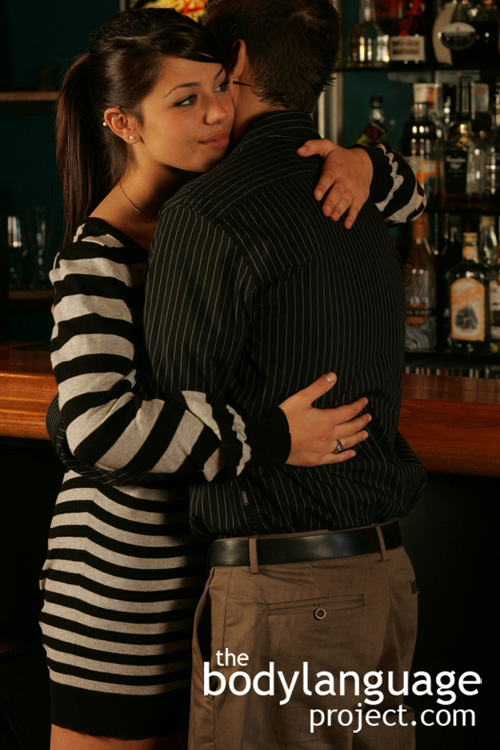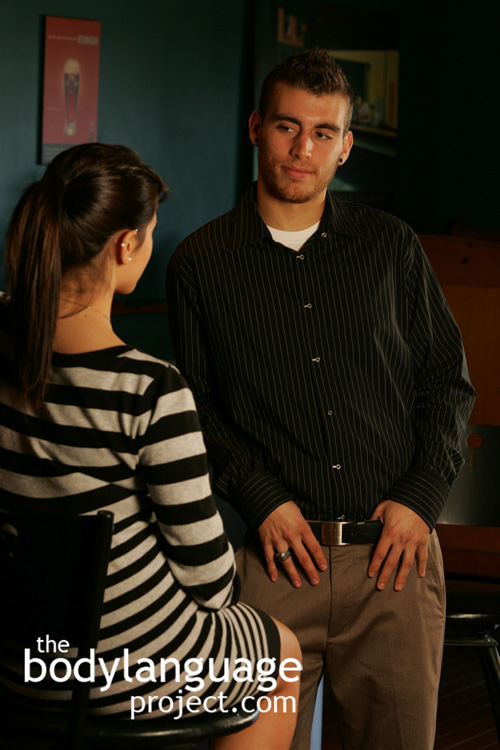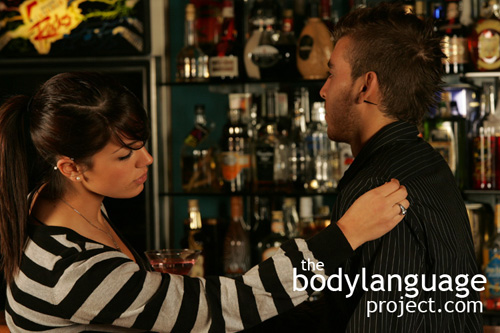The leg twine is one of the most appealing sitting positions for women. The posture is done by tightly wrapping one around the other. The result makes the legs appear extremely toned. To produce a sexual cluster that intensifies signals of interest, a woman can place one hand on her thigh, stroke it, and engage in eye contact, and even bat her eyes at her object of affection.
Crossing and uncrossing the legs in the presence of men, especially if done slowly also shows interest, as it exposes the inner thigh which is a very intimate part of the female body. Leaving the legs uncrossed altogether, while sitting or standing, or massaging them so as to draw attention to them, can ramp up a sexual invitation even further. Another leg crossing variation happens when the leg is tucked under the body and sat on with the knee pointing toward her interest. This also leaves the inside of the thigh exposed and is particularly alluring when wearing a skirt, especially a short one!
Legs are often crossed toward a person of interest although this isn’t a hard fast rule. For example, most people have a leg cross preference, and so only find sitting one way or the other to be comfortable. The theory behind leg crossing toward the person we are connecting with stems from the symbolism of the leg as a barrier preventing outside people from entering. Orienting the body and shoulders toward someone has the same effect. However, leaning in with a leg cross to shrink the distance can deliver a much stronger and more reliable message. It is the proximity that produces the real information, rather than the actual leg cross direction. Having the legs spread while sitting or standing isn’t always a positive cue of interest, though sometimes it is, but it always tell us something about the sender.
For the sake of being complete, at the risk of sounding obvious, open legs tells us that a woman is either easy, trying to look that way, or doesn’t realize she’s be improper so is careless about her sitting postures. In other words, legs wide open says she’s a bit sloppy, regardless of her true intention. Woman should always hold good leg crossing postures especially in public and even when trying to attract the attention of men. In most cases, appearing easy or sloppy is not to their benefit, at least to most. With the recent lax in proper manners, I suspect appearing sloppy, or “casual” to use a more political term, is the likely culprit, but legs open can still be tested for easiness by men keen on scoring an easy women. While this all might sound crass, remember that these are the types of signals being sent when women comport themselves in these ways, so it is up to them to change their body postures, as changing the nature of subconscious perceptions is impossible. Those that aren’t reading material on body language, which is a healthy majority, will merely go on instinct, and this instinct will have “easy” written all over it.
Above: The legs speak and they often cross toward their interest. By re-orienting, as she has done, this is an overt signal that Julie is interested and “plugging” into the conversation with Mark. This is a strong indicator of interest. Much more is covered in the Ebook Body Language Project: Dating, Attraction and Sexual Body Language.














